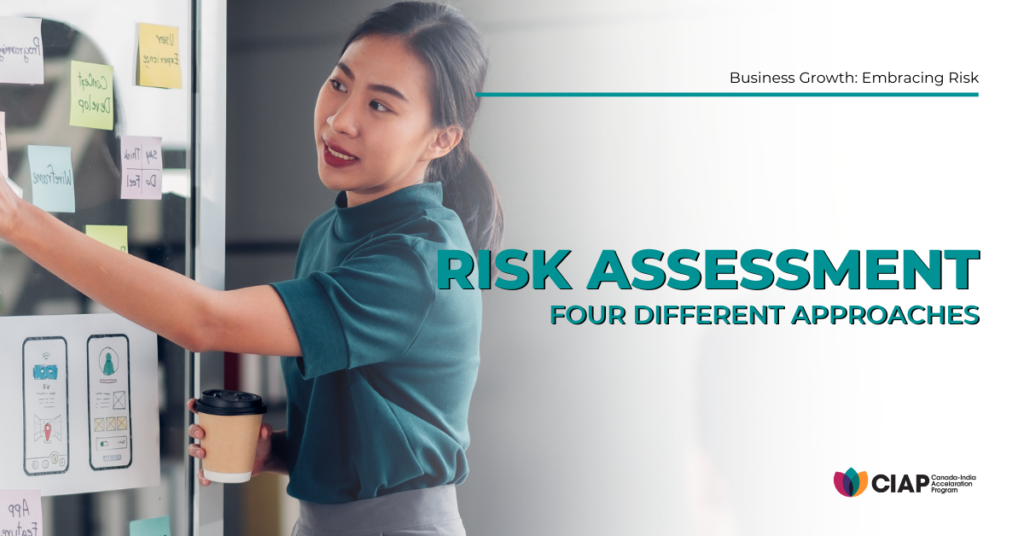Like the adage – with great power comes great responsibility, with growth, comes risk. The common goal of any business is, amongst other things, to scale and grow, but it’s important to understand that a key propeller of growth is managing risk. Survival often lies in managing and embracing it at every stage.
Growth and risk management are directly proportional. However, it is often overlooked, ignored, or not given the attention it deserves. It is the opposite and where the opportunity to grow lies – it needs to be efficiently managed but not feared. It is vital to building a positive relationship with risk from the get-go rather than fighting failures. Let us delve into the elements involved.
Getting Started – How To Setup A Risk Assessment?

It’s important to consider, as a business leader, why you’re taking the time to look at risk. Commit to putting careful thought into where your company is as a whole as you take the steps to begin looking at and managing risks. This contemplative period is important because it acts as a baseline for your risk management strategies.
Risk assessment is a means to determine or project the loss to an organization in case of an incident. It can mean different things depending on the nature of an organization. It is the identification of risks that might negatively impact growth. Since risk is an integral part of growth, it proves best for companies to have risk assessments in place to manage risks rather than hoping to avoid them. The basis to which is integrating a practical and sustainable risk assessment process.
Once you have a risk assessment process in place, it is easier for you to determine the pros and cons of taking up a project, making that investment, or expanding into new territories. Weighing the risks against the value can be both qualitative and quantitative.

There are many methods for risk assessment that could fit your business. Take a look at these examples:
This method outlines risk assessment to identify potential hazards, and business-impact analysis to understand the impact to your business. For small businesses, this method is not only beneficial but is also quite crucial.
Covid urged businesses to build strategies that are more resilient than ever. This method presents an opportunity to reassess current methodologies and prepare for contingencies for future crises. From supply chain to changing consumer behaviours, it allows you to create high-level risk scenarios.
HBR laid out an effective framework to first categorize risk into 3 buckets like – internal, external, and strategic risks. It helps to break down the risks your business is most susceptible to and then implement a strategy.
- Qualitative & Quantitative Assessments from Compliance Bridge –
The qualitative method is intangible, theoretical, and non-numerical data to determine a risk model; while the quantitative method invests itself in crunching numbers to strategize or manage risk. Employing a combination of both tools can give you interesting insights into your projects.
The Importance of Balance (Research vs Innovation)

Risk is often a sensitive and hard topic to discuss in the planning room. The conservative approach to risk is trying to mitigate it, while the optimum way is to manage it. Of course, risk is subjective to the size of the company and SMEs have more wiggle room with the risks involved.
Smaller businesses often tend to lean on research to dodge failures, however, risk is inevitable and where resilience lies. For example, risks associated with cybersecurity or technology are always high, however, it is also where the demand lies, and markets thrive. The more we rely on it means the more risks are involved, so the idea is to be prepared and protected but take the plunge because growth lies beyond the gateways of risks.
Sometimes risks are more calculated, while some are unforeseen. For example, you can rely on research to carefully tackle growth, while fully understanding that growth means being vulnerable and taking chances.
If you are interested in learning more, we also have a similar post that talks about Overcoming 3 Challenges That Impact Your Business’ Chance For Survival
Setbacks and Challenges – Acceptance and Opportunities

Incorporating robust risk assessment tools is only the beginning. It is a dynamic process with many variable elements that need constant reassessing. As you take up projects and expand your portfolio, you realize that sometimes it is not a one-size-fits-all strategy. It needs tweaking and revisiting because it is inevitable to encounter setbacks and complete failures despite best practices in place.
A better strategy is to try to turn every setback into an opportunity. Here are a few steps that many companies big and small follow, to navigate from a failure.
- Take the Time to Process Failure – It is important to assimilate the setback. Process, accept, and move ahead with it.
- Look for a Pattern – When you sit down to analyse the situation, try and look for any trends. If it is a first, then make a note of the general findings to use down the line.
- Get to the Core – Discovering the origin of the mishap is great for preventing them in the future. Using tools, such as a Kaizen tool called ‘The 5 Why’s’, can be employed to get to the bottom of the issue.
- Turn It Into An Opportunity – You can turn this around by using it as a baseline for a future project and achieve better results.
These tools enable you to navigate obstacles and handle unforeseen consequences better.
Knowing that things could be worse should not stop us from trying to make them better.
Sheryl Sandberg, Facebook COO, Author
Key Takeaway

Understanding what risk is and the importance of having a methodology in place is important for business leaders. Without risk, there’s no growth, and therefore it is important to approach it with faith instead of fear.
Having a risk assessment strategy in place is the first step to systematically incorporate a broader perspective during planning and forecasting. Focussing on striking a balance between research and innovation for business growth is another key element in expansion and long-term sustainability.
It’s also very worth remembering that growth is not linear, and making wrong turns is part of the process. Turning failures into opportunities is a crucial skill to possess.
Is risk assessment built-in to your business planning strategies? We’d love to hear some of your best tips for embracing risk in your business journey!
